
LearningSDL011
.pdf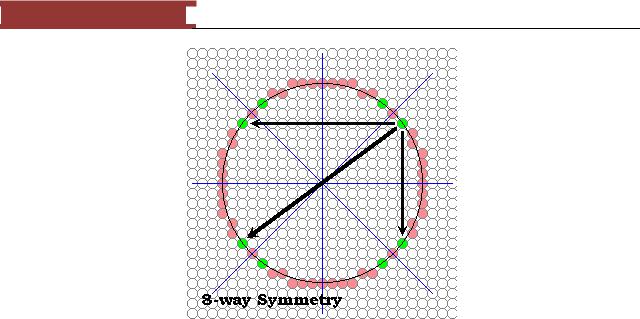
December 15, 2011 [LEARNING SDL – A BEGINNER’S GUIDE]
[LEARNING SDL – A BEGINNER’S GUIDE]
Figure 100 - 8-way symmetry
We can find any point's symmetric complement about these lines by permuting the indices. For example the point (x,y) has a complementary point (y,x) about the linex=y. And the total set of complements for the point (x,y) are
{(x,-y), (-x,y), (-x,-y), (y,x), (y,-x), (-y,x),(-y,-x)}
The following routine takes advantage of this 8-way symmetry.
public void circleSym8(int xCenter, int yCenter, int radius, Color c)
{
int pix = c.getRGB(); int x, y, r2;
r2 = radius * radius;
raster.setPixel(pix, xCenter, yCenter + radius); raster.setPixel(pix, xCenter, yCenter - radius); raster.setPixel(pix, xCenter + radius, yCenter); raster.setPixel(pix, xCenter - radius, yCenter);
y = radius; x = 1;
y = (int) (Math.sqrt(r2 - 1) + 0.5); while (x < y) {
raster.setPixel(pix, xCenter + x, yCenter + y); raster.setPixel(pix, xCenter + x, yCenter - y); raster.setPixel(pix, xCenter - x, yCenter + y); raster.setPixel(pix, xCenter - x, yCenter - y); raster.setPixel(pix, xCenter + y, yCenter + x); raster.setPixel(pix, xCenter + y, yCenter - x); raster.setPixel(pix, xCenter - y, yCenter + x); raster.setPixel(pix, xCenter - y, yCenter - x); x += 1;
121
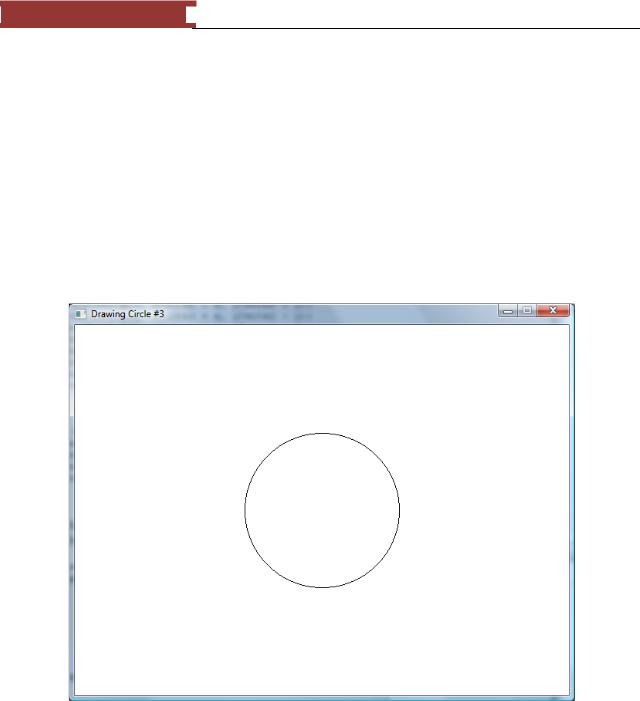
December 15, 2011 [LEARNING SDL – A BEGINNER’S GUIDE]
[LEARNING SDL – A BEGINNER’S GUIDE]
y = (int) (Math.sqrt(r2 - x*x) |
+ 0.5); |
} |
|
if (x == y) { |
|
raster.setPixel(pix, xCenter + |
x, yCenter + y); |
raster.setPixel(pix, xCenter + |
x, yCenter - y); |
raster.setPixel(pix, xCenter - |
x, yCenter + y); |
raster.setPixel(pix, xCenter - |
x, yCenter - y); |
} |
|
}
So now we get 8 points for every function evaluation, and this routine should be approximately 4-times faster than our initial circle-drawing algorithm. What‘s going on with the four pixels that are set outside the loop (both at the top and bottom)? Didn‘t I say that every point determines 7 others?
Create a C++ SDL based project named DrawCircle3 using the algorithm above.
Figure 101 - Using 8-way symmetry to draw a circle
Wait a Minute! What has happened here?
It seems suddenly that our circle's appear continuous, and we added no special code to test for the slope. Symmetry has come to our rescue (actually, symmetry is also what saved us on lines... think about it).
122

December 15, 2011 [LEARNING SDL – A BEGINNER’S GUIDE]
[LEARNING SDL – A BEGINNER’S GUIDE]
For more information on how to make the computation faster please see the original paper (http://groups.csail.mit.edu/graphics/classes/6.837/F98/Lecture6/circle.html) this section was copied from.
Chapter 3 - Sprites, A Simple View
123
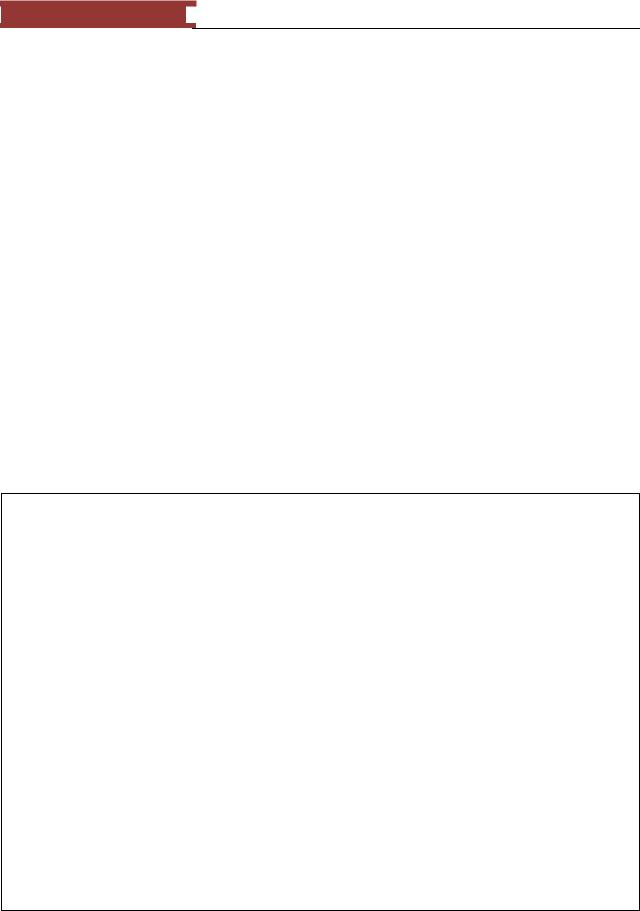
December 15, 2011 [LEARNING SDL – A BEGINNER’S GUIDE]
[LEARNING SDL – A BEGINNER’S GUIDE]
Chapter 4 - Processing Events
The key part of our program has been the forLoop which acted as our game loop
for(;;) {
//wait for an event if(SDL_PollEvent(&event)==0) {
//no event occurred so move things around
//on the screen
//. . .
//now update the screen
SDL_Flip(pDisplaySurface); } else {
//event occurred, check for quit if(event.type==SDL_QUIT) break;
}
}
The forLoop contains an ifStatement that basically translates to:
If no event occurred then
Update the screen (move monsters, fire missiles at hero, etc)
Else
Check if the event was a user request to ‗QUIT‘ application, if so, break out of the loop
End if
Alternative Game Loop
Another method used by many developers for the game loop above is to use the following:
while (SDL_PollEvent(&event))
{
// check for messages switch (event.type)
{
//exit if the window is closed case SDL_QUIT:
done = true; break;
//check for keypresses
case SDL_KEYDOWN:
{
// exit if ESCAPE is pressed
if (event.key.keysym.sym == SDLK_ESCAPE) done = true;
break;
}
}// end switch
}// end of message processing
124
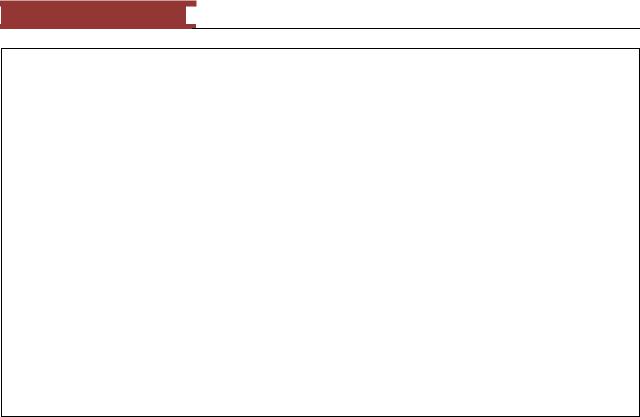
December 15, 2011 [LEARNING SDL – A BEGINNER’S GUIDE]
[LEARNING SDL – A BEGINNER’S GUIDE]
//DRAWING STARTS HERE
//clear screen
SDL_FillRect(screen, 0, SDL_MapRGB(screen->format, 0, 0, 0));
// draw bitmap
SDL_BlitSurface(bmp, 0, screen, &dstrect);
//DRAWING ENDS HERE
//finally, update the screen :) SDL_Flip(screen);
}// end main loop
The above translates into:
while there exists an event process the event
end while update the screen
The are both basically the same!
The SDL function used to determine if there exists an event to process is the SDL_PollEvent.
Function Name: SDL_PollEvent
Format:
int SDL_PollEvent(SDL_Event *event);
Description:
This function checks of there are any currently pending events (keypress, mouse click, etc). It returns 1 (regarded as TRUE) if there are any pending events, otherwise 0. The event data structure is populated with the event details. The game loop we contruct always processes any pending events first before updating the screen.
Note: When the screen needs to be updated we have used the SDL_UpdateRect and more recently SDL_Flip to perform a page flip. Page flipping or double buffeing allows you to prepare the next game frame and swap it out entirely so the game appears smooth and continuous to the player.
The operating system sends to your application any actions taken by the user directed to the screen or window representing your game program. The possible actions a user can take can range from pressing the ESCAPE key, firing a button on the joystick, closing the window (in order to start doing homework), or move the mouse. Each action is packaged as an event and is available for the program to process. What is an event? In SDL an event is packaged into a complex struct named SDL_Event. There are many
125
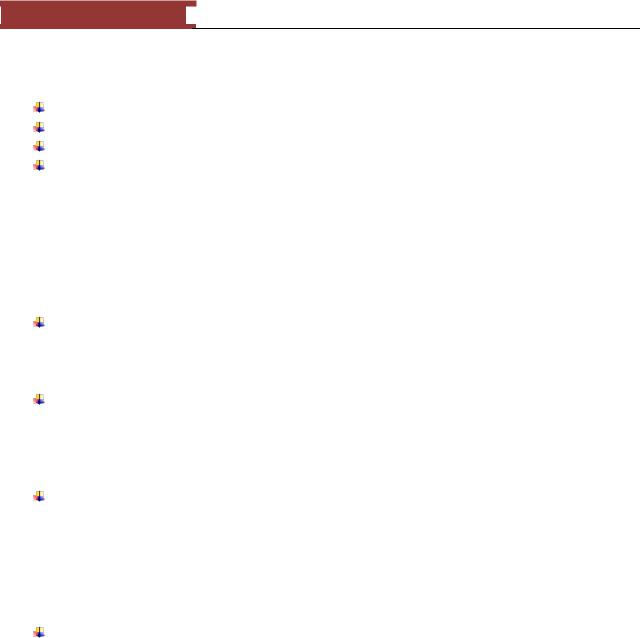
December 15, 2011 [LEARNING SDL – A BEGINNER’S GUIDE]
[LEARNING SDL – A BEGINNER’S GUIDE]
types of event packaged and sent to your program from the SDL system. These events fall into the following categories:
Keyboard Events
Joystick Events
System Events
Mouse Events
When you initialize SDL using SDL_Init SDL establishes an event queue. When the user performs an action that generates one of the above events it will get placed in the event queue as an SDL_Event struct. The struct consists of two components Uint8 type indicating the type of event and one of the following event types:
Keyboard Events
oSDL_KeyboardEvent captures one of the following two events
SDL_KEYDOWN
SDL_KEYUP
Joystick Events
o |
SDL_JoyAxisEvent |
o |
SDL_JoyBallEvent |
o |
SDL_JoyHatEvent |
o |
SDL_ButtonEvent |
System Events |
|
o |
SDL_ActiveEvent |
o |
SDL_ResizeEvent |
o |
SDL_ExposeEvent |
o |
SDL_QuitEvent |
o |
SDL_UserEvent |
o |
SDL_SywWMEent |
Mouse Events |
|
o |
SDL_MouseMotionEvent |
o |
SDL_MouseButtonEvent |
Keyboard Events
There are two types of keyboard events issued when the user interacts with the keyboard – key pressed and key released. The event is captured in the SDL_Event struct as an SDL_KeyboardEvent. The definition of this struct is the following:
typedef struct { Uint8 type; Uint8 state;
SDL_keysym keysym; } SDL_KeyboardEvent;
126

December 15, 2011 [LEARNING SDL – A BEGINNER’S GUIDE]
[LEARNING SDL – A BEGINNER’S GUIDE]
The type value will be either be SDL_KEYDOWN or SDL_KEYUP. The state field pretty much reflects the same information as type it will be either SDL_PRESSED or SDL_RELEASED. The SDL_keysym contains all the details on which key(s) were pressed (or released). The SDL_keysym is another struct with the following format:
typedef struct {
Uint8 |
scancode; |
SDLKey |
sym; |
SDLMod |
mod; |
Uint16 |
unicode; |
} SDL_keysym;
The scancode hold a hardware specific scancode and will never be used in any of our games. The sym field holds an SDL virtual keysym. We will be primarily using this field since it will contain an SDLKey value.
The SDLKey values are one of the following:
Table 14 - SDL Keysym definitions
SDL_Key |
ASCII value |
|
Common name |
SDLK_BACKSPACE |
'\b' |
|
backspace |
SDLK_TAB |
'\t' |
|
tab |
SDLK_CLEAR |
|
|
clear |
SDLK_RETURN |
'\r' |
|
return |
SDLK_PAUSE |
|
|
pause |
SDLK_ESCAPE |
'^[' |
|
escape |
SDLK_SPACE |
' ' |
|
space |
SDLK_EXCLAIM |
'!' |
|
exclaim |
SDLK_QUOTEDBL |
'"' |
|
quotedbl |
SDLK_HASH |
'#' |
|
hash |
SDLK_DOLLAR |
'$' |
|
dollar |
SDLK_AMPERSAND |
'&' |
|
ampersand |
SDLK_QUOTE |
''' |
|
quote |
SDLK_LEFTPAREN |
'(' |
|
left parenthesis |
SDLK_RIGHTPAREN |
')' |
|
right parenthesis |
SDLK_ASTERISK |
'*' |
|
asterisk |
SDLK_PLUS |
'+' |
|
plus sign |
SDLK_COMMA |
',' |
|
comma |
SDLK_MINUS |
'-' |
|
minus sign |
SDLK_PERIOD |
'.' |
|
period |
SDLK_SLASH |
'/' |
|
forward slash |
SDLK_0 |
'0' |
|
0 |
SDLK_1 |
'1' |
|
1 |
SDLK_2 |
'2' |
|
2 |
SDLK_3 |
'3' |
|
3 |
SDLK_4 |
'4' |
|
4 |
SDLK_5 |
'5' |
|
5 |
|
|
127 |
|

December 15, 2011 [LEARNING SDL – A BEGINNER’S GUIDE]
[LEARNING SDL – A BEGINNER’S GUIDE]
SDL_Key |
ASCII value |
|
Common name |
SDLK_6 |
'6' |
|
6 |
SDLK_7 |
'7' |
|
7 |
SDLK_8 |
'8' |
|
8 |
SDLK_9 |
'9' |
|
9 |
SDLK_COLON |
':' |
|
colon |
SDLK_SEMICOLON |
';' |
|
semicolon |
SDLK_LESS |
'<' |
|
less-than sign |
SDLK_EQUALS |
'=' |
|
equals sign |
SDLK_GREATER |
'>' |
|
greater-than sign |
SDLK_QUESTION |
'?' |
|
question mark |
SDLK_AT |
'@' |
|
at |
SDLK_LEFTBRACKET |
'[' |
|
left bracket |
SDLK_BACKSLASH |
'\' |
|
backslash |
SDLK_RIGHTBRACKET |
']' |
|
right bracket |
SDLK_CARET |
'^' |
|
caret |
SDLK_UNDERSCORE |
'_' |
|
underscore |
SDLK_BACKQUOTE |
'`' |
|
grave |
SDLK_a |
‗a‘ |
|
a |
SDLK_b |
‗b‘ |
|
b |
: |
: |
|
: |
SDLK_z |
‗z‘ |
|
Z |
SDLK_DELETE |
'^?' |
|
Delete |
SDLK_KP0 |
|
|
keypad 0 |
SDLK_KP1 |
|
|
keypad 1 |
: |
: |
|
: |
SDLK_KP9 |
|
|
keypad 9 |
SDLK_KP_PERIOD |
'.' |
|
keypad period |
SDLK_KP_DIVIDE |
'/' |
|
keypad divide |
SDLK_KP_MULTIPLY |
'*' |
|
keypad multiply |
SDLK_KP_MINUS |
'-' |
|
keypad minus |
SDLK_KP_PLUS |
'+' |
|
keypad plus |
SDLK_KP_ENTER |
'\r' |
|
keypad enter |
SDLK_KP_EQUALS |
'=' |
|
keypad equals |
SDLK_UP |
|
|
up arrow |
SDLK_DOWN |
|
|
down arrow |
SDLK_RIGHT |
|
|
right arrow |
SDLK_LEFT |
|
|
left arrow |
SDLK_INSERT |
|
|
insert |
SDLK_HOME |
|
|
home |
SDLK_END |
|
|
end |
SDLK_PAGEUP |
|
|
page up |
SDLK_PAGEDOWN |
|
|
page down |
SDLK_F1 |
|
|
F1 |
SDLK_F2 |
|
|
F2 |
: |
: |
|
: |
SDLK_F15 |
|
|
F15 |
SDLK_NUMLOCK |
|
|
numlock |
SDLK_CAPSLOCK |
|
|
capslock |
|
|
128 |
|

December 15, 2011 [LEARNING SDL – A BEGINNER’S GUIDE]
[LEARNING SDL – A BEGINNER’S GUIDE]
SDL_Key |
ASCII value |
Common name |
SDLK_SCROLLOCK |
|
scrollock |
SDLK_RSHIFT |
|
right shift |
SDLK_LSHIFT |
|
left shift |
SDLK_RCTRL |
|
right ctrl |
SDLK_LCTRL |
|
left ctrl |
SDLK_RALT |
|
right alt |
SDLK_LALT |
|
left alt |
SDLK_RMETA |
|
right meta |
SDLK_LMETA |
|
left meta |
SDLK_LSUPER |
|
left windows key |
SDLK_RSUPER |
|
right windows key |
SDLK_MODE |
|
mode shift |
SDLK_HELP |
|
Help |
SDLK_PRINT |
|
print-screen |
SDLK_SYSREQ |
|
SysRq |
SDLK_BREAK |
|
break |
SDLK_MENU |
|
menu |
SDLK_POWER |
|
power |
SDLK_EURO |
|
euro |
The program would check for keyboard events in the else part in the game loop:
if(SDL_PollEvent(&event)==0) {
//NO EVENT
}else {
//event occurred, check for quit if(event.type==SDL_QUIT) break;
}
A better design than the above is to have a switch statement that tests the value of event.type. Inside the switch statement you check for the event types you are interested in having your program handle.
bool endOfGame = false;
if (SDL_PollEvent(&event) == 0) { // Handle no event
else {
// Process event while (!endOfGame) {
switch(event.type) { case SDL_KEYDOWN:
//Handle key down case SDL_KEYUP:
//Handle key up case SDL_QUIT:
//Handle user quitting program
129
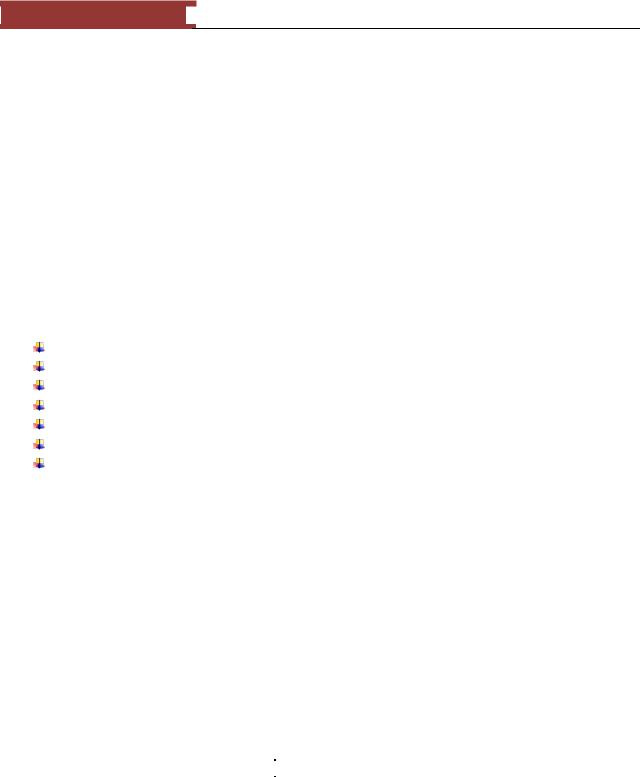
December 15, 2011 [LEARNING SDL – A BEGINNER’S GUIDE]
[LEARNING SDL – A BEGINNER’S GUIDE]
endOfGame = true; break;
default:
// event not handling
}
}
}
We now have replaced the forLoop with a whileLoop in order to have the SDL_QUIT set the flag endOfGame when the user has decided to quit. The same variable can be used to terminate the game when the game is over.
LAB #1: Program 3_1 – Handling Keyboard Events #1
Create a new project named Program3_1 using the template Simple SDL Project template.
Change the window caption to ―Handling Keyboard Events #1‖
Create and initialize a bool variable to named endOfGame to false Change the forLoop to a whileLoop
Add the switch statement as suggested above Compile and run
Now
Table 15 - SDL Modifier Definitions
SDL Modifier |
Meaning |
KMOD_NONE |
No modifiers applicable |
KMOD_NUM |
Numlock is down |
KMOD_CAPS |
Capslock is down |
KMOD_LCTRL |
Left Control is down |
KMOD_RCTRL |
Right Control is down |
KMOD_RSHIFT |
Right Shift is down |
KMOD_LSHIFT |
Left Shift is down |
KMOD_RALT |
Right Alt is down |
KMOD_LALT |
Left Alt is down |
KMOD_CTRL |
A Control key is down |
KMOD_SHIFT |
A Shift key is down |
KMOD_ALT |
An Alt key is down |
Joystick Events
130
